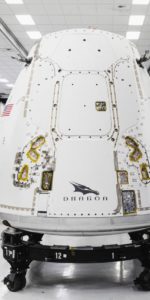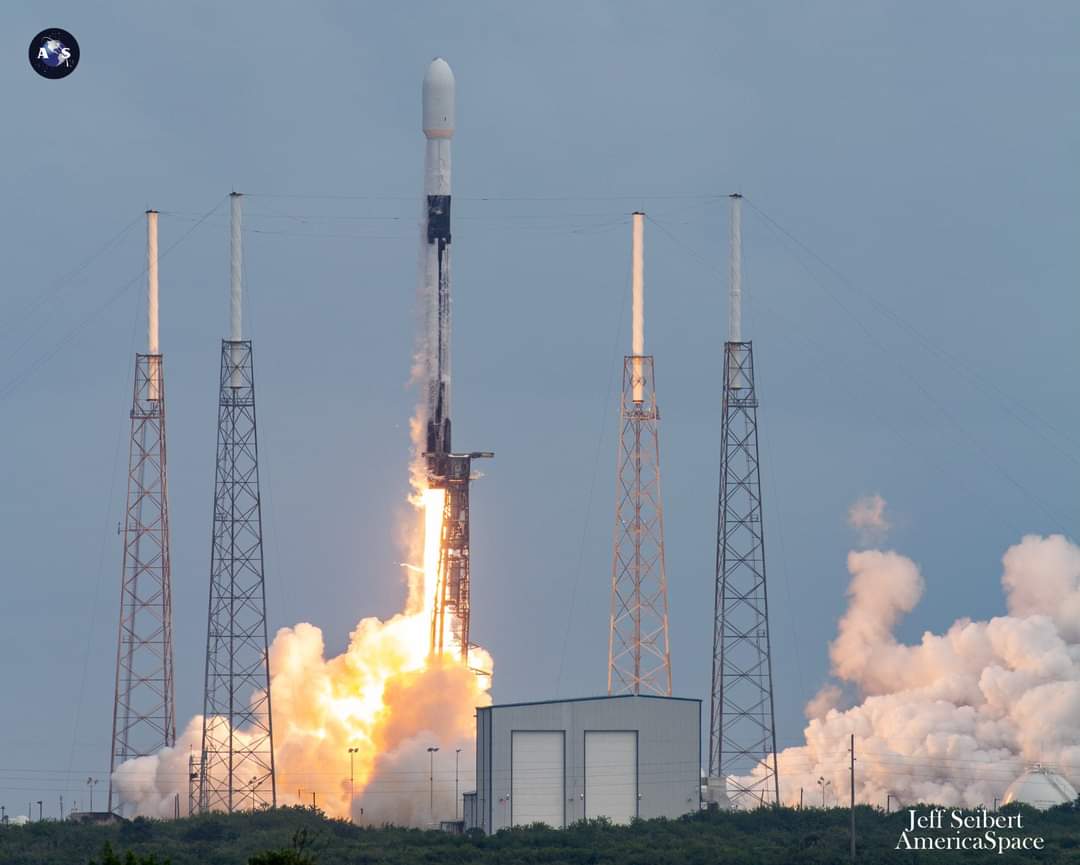
Seven weeks since its most recent launch, the veteran B1060 Falcon 9 core took flight again Saturday to deliver its second 60-strong batch of Starlink internet communications satellites to low-Earth orbit. Counting two successful Falcon 1 missions in September 2008 and July 2009, a further 95 successful Falcon 9 missions since June 2010 and three successful Falcon Heavy missions since February 2018, today’s launch marked the 100th successful Falcon-class mission by SpaceX since September 2008.
Despite a scrubbed launch attempt on Thursday, SpaceX threaded the needle and finally got their bird airborne from Space Launch Complex (SLC)-40 at Cape Canaveral Air Force Station on time at 11:31 a.m. EDT. Launching only 51 days, 2 hours and 45 minutes after its most recent mission, B1060 narrowly missed securing a new record for the reusability and turnaround of a Falcon 9 first stage. But it did set a new record for the shortest amount of time it has taken a Falcon 9 core to fly three times.
Today’s mission marked the 19th Falcon 9 mission of 2020, making it SpaceX’s second-most-flown year on record. And B1060 has been an integral part of the action since the summer, having launched a Block III Global Positioning System (GPS) navigation and timing satellite for the U.S. Space Force on 30 June and another Starlink batch on 3 September.
With its third mission this morning, B1060 established an impressive turnaround of 51 days, 2 hours and 45 minutes between its two most recent flights. And that puts it in second place on the Falcon 9 reusability and turnaround league-tables behind its sibling B1058, which logged 51 days, 2 hours and 8 minutes between launching “Bob and Doug’s Excellent Adventure” on 30 May and South Korea’s ANASIS-II on 20 July. B1060 also became the fourth Falcon 9 core to fly three times in 2020.
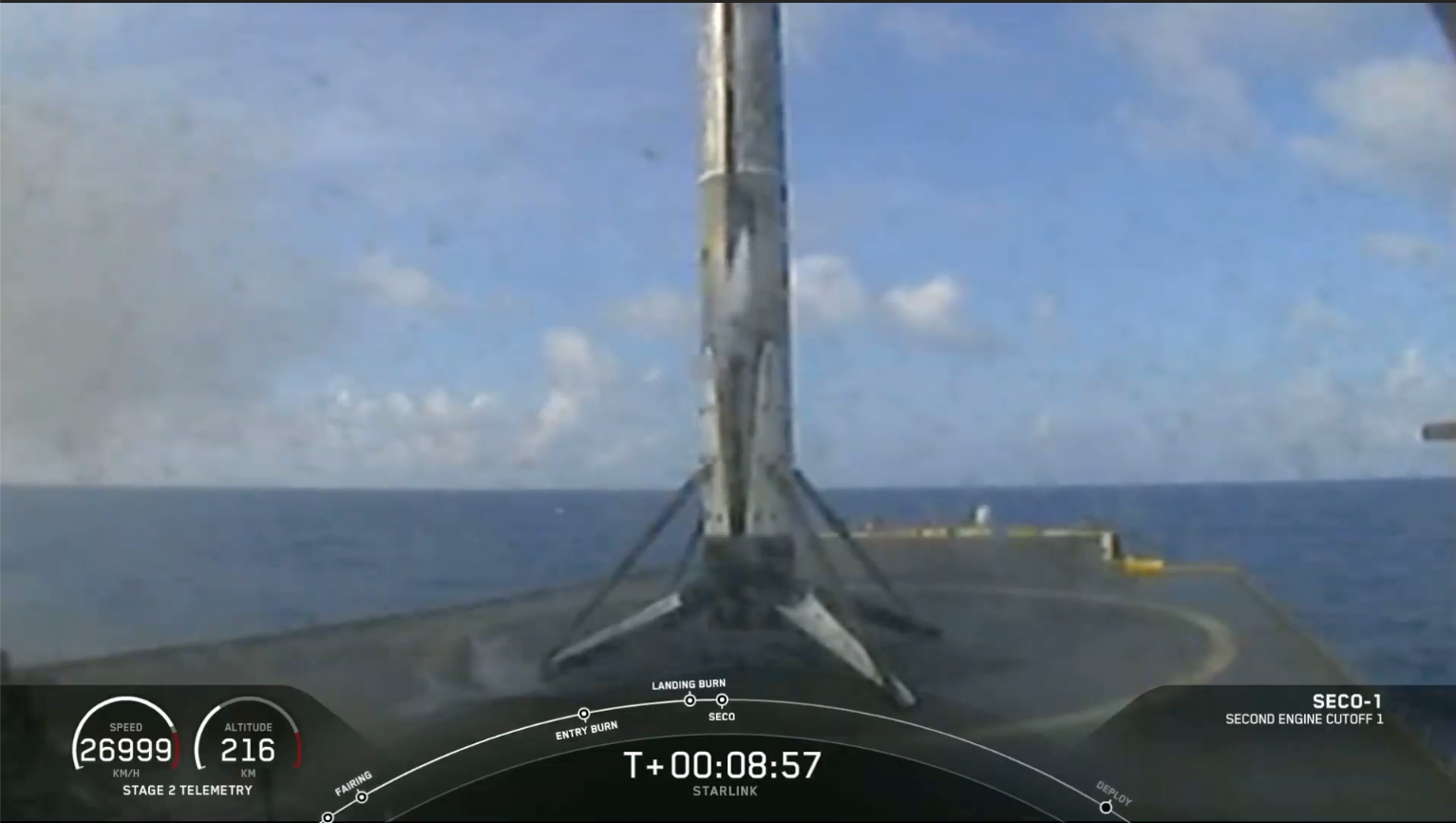
Despite four instances earlier this summer to do away with customary Static Fire Tests ahead of launch (primarily for “in-house” Starlink missions, but also in advance of Argentina’s SAOCOM-1B flight in late August), SpaceX does appear to be returning to these pre-launch rituals, with recent Falcon 9 engine issues possibly playing a role in this decision.
Last Sunday’s launch of the record-tying B1051 was preceded by a firing of its nine Merlin 1D+ first-stage engines and on Wednesday B1060 did likewise. Following the test, SpaceX tweeted its standard pre-launch update. “Targeting Thursday, October 22 at 12:14 p.m. EDT,” then cautioned “keeping an eye on weather”.
Indeed, Thursday’s weather was figuratively and literally 50-50, with a chance of a slight improvement to 60-percent favorable in the event of a 24-hour scrub to 11:53 a.m. EDT Friday. But SpaceX pressed ahead with its launch attempt and at T-35 minutes the process of loading liquid oxygen and a highly refined form of rocket-grade kerosene (known as “RP-1”) into the tanks of the 230-foot-tall (70-meter) Falcon 9 got underway.
But Thursday’s attempt was ultimately called off in the final minutes, though not on account of the weather. “Standing down from today’s launch of Starlink to allow additional time for mission assurance work,” SpaceX tweeted, before later announcing its intent to support a second attempt at 11:31 a.m. EDT Saturday.
Weather conditions were predicted to be about 60-percent favorable the second time around, with a slight deterioration to 50-50 in the event of a scrub to Sunday. The 45th Weather Squadron noted that shower activity in the Atlantic Ocean could threaten the Launch Commit Criteria (LCC) in the form of a possible breach of the Cumulus Cloud Rule.
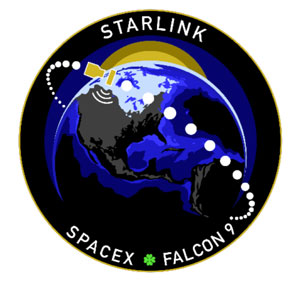
Liftoff occurred on time at 11:31 a.m. EDT Saturday, marking the 19th mission since January and establishing 2020 in second place for the greatest number of Falcon 9 flights in a single calendar year. If SpaceX accomplishes at least three more missions—and with the forthcoming flights of the Sentinel-6 Michael Freilich ocean-monitoring satellite, the classified NROL-108 mission for the National Reconnaissance Office and Dragon Resilience with Crew-1 anticipated in the next few weeks alone, it should—2020 will eclipse 2018 as its most-flown year on record.
And although Bob and Doug’s old booster slightly pips B1060 to the post (by just a few minutes) with the empirical Falcon 9 launch-to-launch turnaround record, today’s mission did steal a tiny bit of its thunder. In flying three times since 30 June, B1060 now holds the record for the shortest amount of time it has taken a Falcon 9 core to log three missions. B1058 logged logged 129 days from the launch of Bob and Doug in May through the launch of ANASIS-II in July to the launch of a Starlink flight three weeks ago, whilst with today’s mission B1060 has done it in 116 days.
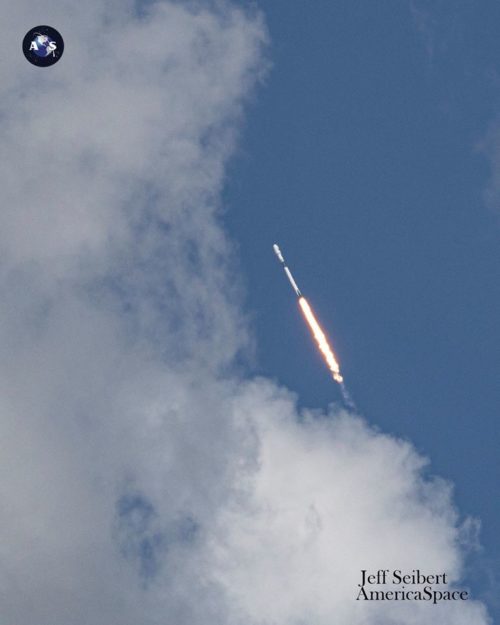
In fact, it has been an impressive year overall for SpaceX’s reusability statistics. Including this morning’s flight, the 19 missions of 2020 have been accomplished with only eight Falcon 9 cores, four of which have flown three times and one—last Sunday’s record-busting B1051—did so on four occasions.
Following launch, B1060 provided the means and the muscle, in the form of 1.5 million pounds (680,000 kg) of thrust, to power today’s mission for the first 2.5 minutes, before its propellants were exhausted and it was jettisoned as planned from the stack.
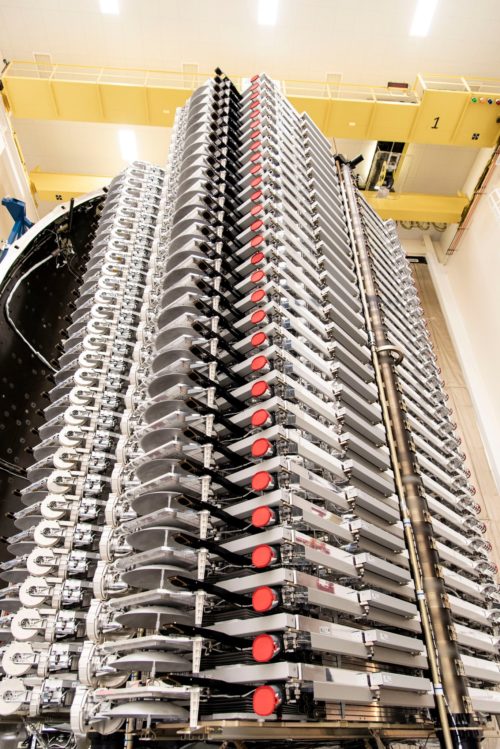
It commenced a picture-perfect descent, guided by its hypersonic grid-fins and re-entry burns, to alight smoothly onto the deck of the Autonomous Spaceport Drone Ship (ASDS), “Just Read the Instructions”, which was supporting its fourth East Coast Falcon 9 “catch” after previously pulling duty offshore at Vandenberg Air Force Base, Calif.
The second stage, powered by its single Merlin 1D+ Vacuum engine, then picked up the baton with a pair of burns to deploy the 60 Starlinks at 63 minutes after liftoff. All told, SpaceX has now deposited 953 of these flat-packed internet providers in orbit since May 2019.
.
FOLLOW AmericaSpace on Facebook and Twitter!
.




